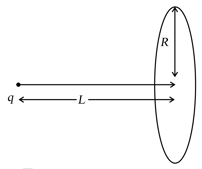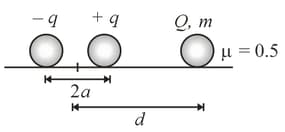EASY
JEE Main/Advance
IMPORTANT
Earn 100
If electric field in a region is given by
where
then electric flux passing through the plane The plane is a square of side
(a)
(b)
(c)
(d)None of these
66.67% studentsanswered this correctly

Important Questions on Electric Charges and Fields
EASY
JEE Main/Advance
IMPORTANT
If electric field in a region is given as , then calculate the flux of electric field passing through a rectangular plane at
EASY
JEE Main/Advance
IMPORTANT
If electric field in a region is given by where then electric flux passing through the plane The plane is a square of side The flux passing through a triangular plane (Area ) at will be
MEDIUM
JEE Main/Advance
IMPORTANT
The electric flux through ring shown in figure is

MEDIUM
JEE Main/Advance
IMPORTANT
A ball of radius carries a positive charge whose volume charge density depends only on the distance from the ball's centre as where is a constant.
The electric field at distance will be
HARD
JEE Main/Advance
IMPORTANT
Inside a uniformly charged ball, at , the electric field is maximum. Then (Given, is volume charge density)
HARD
JEE Main/Advance
IMPORTANT
Inside a uniformly charged ball, at , the electric field is maximum. The maximum electric field inside ball is (Given, is volume charge density)
EASY
JEE Main/Advance
IMPORTANT
Charge is uniformly distributed with volume charge density in a spherical volume of radius A cavity of radius is made in the charge distribution such that the centre of the cavity is at position vector from the centre of the charge distribution, then the electric field in the cavity is

EASY
JEE Main/Advance
IMPORTANT
A dipole having charges and is fixed on a rough surface as shown. Another charge of mass is placed at distance from this dipole. The minimum value of for which charge will not move. (Given , co-efficient of static friction )

